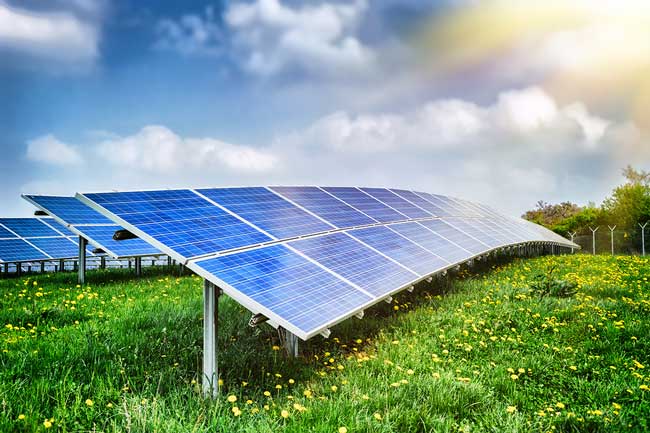Introduction
Community solar projects have emerged as a beacon of hope in the quest for sustainable living. They offer renewable energy solutions that are not only accessible but also economically advantageous. Community solar provides an inclusive alternative for those who cannot install solar panels on their property, allowing more people to join the green energy movement. Understanding how this system works is the first step toward a more sustainable future.
What is Community Solar?
Community solar, also called solar gardens or shared solar, is a model that allows multiple subscribers to benefit from a single, enormous solar array. This setup means you don’t need to install personal solar panels on your property to enjoy the perks of renewable energy. The energy generated by the communal solar panels is shared among participants, who receive credits on their electricity bills for their portion of the power produced. To delve deeper into what is community solar, it’s essential to recognize its distinct capability to democratize access to solar energy. This system has made renewable energy available to a broader audience, reducing the need for extensive personal investment while offering substantial environmental benefits.
Benefits of Community Solar
One of the most compelling advantages of community solar is the potential for significant cost savings. Subscribers often see a reduction in their electricity bills because they are harnessing cleaner, cheaper solar energy. The credits you receive can substantially lower your monthly utility costs.
Additionally, community solar contributes to a reduction in greenhouse gas emissions. By switching to solar power, you directly support the generation of clean energy and contribute to climate change mitigation. The collective impact of a community’s investment in solar energy can be profound, reducing reliance on fossil fuels and decreasing the overall carbon footprint.
Moreover, community solar projects stimulate local economies. They create jobs related to installing, maintaining, and administrating solar panels. Furthermore, they foster energy independence, stabilizing local energy prices and making communities more resilient to fluctuations in energy markets.
How to Join a Community Solar Project
Joining a community solar project is straightforward and user-friendly. Start by researching available projects in your area and selecting a reputable provider. Most programs offer flexible subscription models, allowing you to choose a plan that aligns with your energy needs and financial situation.
Once you’ve selected a project, you typically go through a sign-up process that involves filling out some basic information about your household and energy consumption. After subscribing, you will receive credits on your electricity bill corresponding to your share of the solar energy produced. These credits can lead to substantial savings over time, making the initial time investment worthwhile.
By integrating into a community solar project, you are taking a significant step towards personal energy sustainability and contributing to more extensive, collective environmental goals.
Navigating Community Solar Policies and Regulations
Understanding the regulatory landscape is crucial when considering participation in a community solar program. Policies vary significantly by state and locality, influencing eligibility, subscription models, and financial incentives. It’s essential to familiarize yourself with the specific regulations governing community solar in your area to leverage the benefits and avoid potential pitfalls.
Most states have enacted policies supporting community solar growth by providing incentives or mandating utilities to offer such programs. However, these policies continually evolve, so staying informed about the latest changes is beneficial. This will help you understand your rights and responsibilities as a subscriber and ensure you maximize the advantages of your state’s renewable energy initiatives.
Community Solar and the Future
The future of community solar looks exceptionally promising. As technology advances, solar panels’ efficiency and capacity continue to improve, making community solar projects more effective and cheaper to maintain. Innovations in energy storage and smart grid technology are poised to enhance solar energy’s reliability and benefits further.
Projections indicate that community solar will see substantial growth in the coming years. This expansion will likely increase opportunities for individuals and businesses to use sustainable energy solutions. As these projects become more widespread, they will be crucial in transitioning to a more sustainable and resilient energy grid.
Furthermore, the societal push towards green energy, backed by favorable policies and increased public awareness, positions community solar as a pivotal element in global efforts to combat climate change. These projects exemplify how collective action in renewable energy can lead to significant environmental and economic benefits.
Conclusion
Community solar projects represent a powerful and transformative step toward broader access to renewable energy. They offer a practical solution for those unable to install solar panels on their property, providing financial savings, environmental benefits, and community growth. By participating in a community solar initiative, you are not only reducing your electricity bills but also contributing to a more sustainable and resilient energy future.
The journey to renewable energy need not be solitary. You amplify your impact by joining others in a community solar project, driving collective progress toward a cleaner, greener world. Whether you are a homeowner, renter, or business owner, community solar provides a viable pathway to sustainable energy savings, encouraging you to be part of the solution to today’s pressing energy and environmental challenges.
Keep an eye for more latest news & updates on Mystories List!
